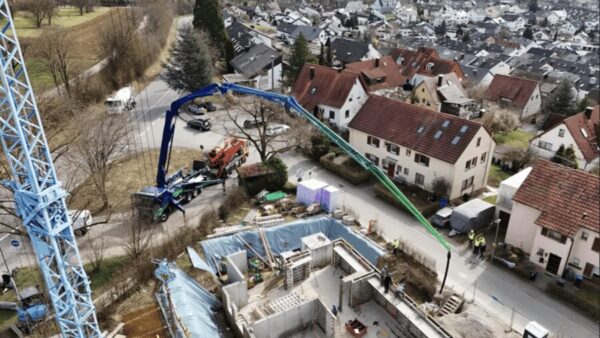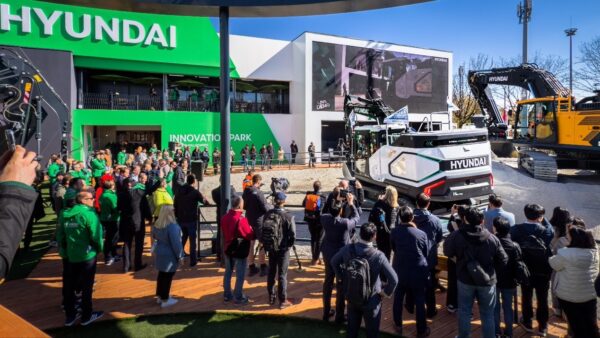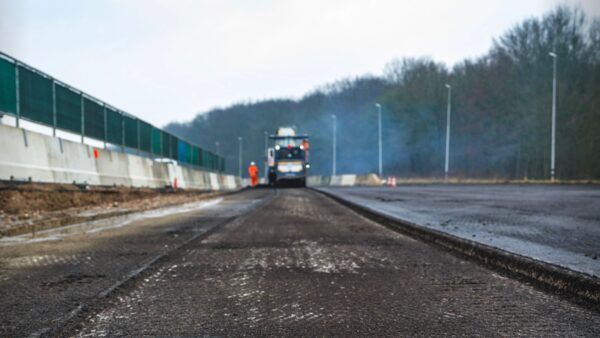Researchers in China have unveiled their work on a thorium-fuelled commercial reactor that would be the first not to require water for cooling.
Â
A 2MW prototype is set to be completed in August, with tests to begin in September, reports newspaper The South China Morning Post.Â
Because the reactor would not need to be built near water, it could be deployed in the deserts and plains of central and western China, complementing wind and solar plants and reducing China’s reliance on coal-fired power stations. The country plans to become carbon neutral by 2060.
The first commercial version, with a power of about 100MW, is due to enter service in 2030.
The Thorium Molten Salt Reactor (TMSR) project, which was begun in 2011, has been underway in Wuwei city, Gansu province in China’s remote northwest. The prototype was to have been completed in 2024, but work was accelerated.
The reactor is cooled with molten salt, which gives a much higher operating temperature than a conventional reactor. This can be as high as 1,000°C, which has hampered previous attempts to design a molten salt reactor since a material has to be found that could contain the fuel.
In 2017, the Shanghai Institute of Applied Physics, which has been leading work on the reactor, announced the creation of a NiMo-SiC alloy – that is, one made from nickel and molybdenum and silicon carbide.
The use of thorium, rather than uranium or plutonium, has a number of advantages. The fuel is less radioactive and because it is in liquid form it would solidify and contain any environmental damage. It would also make the design easier to export, as the element cannot be used to make nuclear weapons.
Professor Yan Rui of the Shanghai Institute of Applied Physics, was a lead researcher on the TMSR. He wrote in a paper published in the Chinese journal Nuclear Techniques last week: “A molten salt reactor has the advantage of being multipurpose, small in size and highly flexible. In recent years, the potential of small-scale molten salt reactors has caught international attention.”
The commercial reactor designed by Yan and his colleagues would be only 3m tall and 2.5m wide, but could produce enough electricity to power town of 100,000 inhabitants.
Image: Crescent Lake, an oasis in the Gobi Desert, Gansu Province, China. Thorium reactors could be deployed in deserts because water is not needed for cooling (Laika ac/CC BY-SA 2.0)Â
Further reading:
- UK’s Moltex Energy signs deal to install molten salt reactor in Estonia
- China starts work on “landmark” fourth-generation fast breeder reactor
- Poland goes nuclear with plan to build six reactors by 2040
Â
Â
Â
Â
China to unveil world’s first waterless molten salt reactor, suitable for deserts
By David Rogers
PIC: 260721 China Thorium desert lake
CAPTION: Crescent Lake, an oasis in the Gobi Desert, Gansu Province, China. Thorium reactors could be deployed in deserts because water is not needed for cooling (Laika ac/CC BY-SA 2.0)
[starts]
Researchers in China have unveiled their work on a thorium-fuelled commercial reactor that would be the first not to require water for cooling.
A 2MW prototype is set to be completed in August, with tests to begin in September, reports newspaper The South China Morning Post. https://tinyurl.com/j2822tw6
Because the reactor would not need to be built near water, it could be deployed in the deserts and plains of central and western China, complementing wind and solar plants and reducing China’s reliance on coal-fired power stations. The country plans to become carbon neutral by 2060.
The first commercial version, with a power of about 100MW, is due to enter service in 2030.
The Thorium Molten Salt Reactor (TMSR) project, which was begun in 2011, has been underway in Wuwei city, Gansu province in China’s remote northwest. The prototype was to have been completed in 2024, but work was accelerated.
The reactor is cooled with molten salt, which gives a much higher operating temperature than a conventional reactor. This can be as high as 1,000°C, which has hampered previous attempts to design a molten salt reactor since a material has to be found that could contain the fuel.
In 2017, the Shanghai Institute of Applied Physics, which has been leading work on the reactor, announced the creation of a NiMo-SiC alloy – that is, one made from nickel and molybdenum and silicon carbide.
The use of thorium, rather than uranium or plutonium, has a number of advantages. The fuel is less radioactive and because it is in liquid form it would solidify and contain any environmental damage. It would also make the design easier to export, as the element cannot be used to make nuclear weapons.
Professor Yan Rui of the Shanghai Institute of Applied Physics, was a lead researcher on the TMSR. He wrote in a paper published in the Chinese journal Nuclear Techniques last week: “A molten salt reactor has the advantage of being multipurpose, small in size and highly flexible. In recent years, the potential of small-scale molten salt reactors has caught international attention.”
The commercial reactor designed by Yan and his colleagues would be only 3m tall and 2.5m wide, but could produce enough electricity to power town of 100,000 inhabitants.
Image: Crescent Lake, an oasis in the Gobi Desert, Gansu Province, China. Thorium reactors could be deployed in deserts because water is not needed for cooling (Laika ac/CC BY-SA 2.0) https://creativecommons.org/licenses/by-sa/2.0/
Further reading:
UK’s Moltex Energy signs deal to install molten salt reactor in Estonia
https://www.globalconstructionreview.com/news/uks-moltex-energy-signs-deal-install-molten-salt-r/
China starts work on “landmark” fourth-generation fast breeder reactor
https://www.globalconstructionreview.com/news/china-starts-work-landmark-fourth-generation-fast-/
Poland goes nuclear with plan to build six reactors by 2040
https://www.globalconstructionreview.com/news/poland-goes-nuclear-plan-build-six-reactors-2040/
Â










